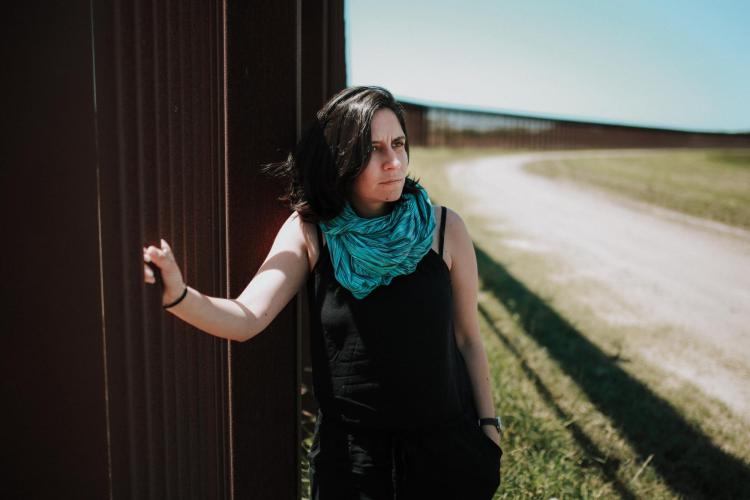Exhibition highlights death in the desert
CU Boulder researchers hosting workshops to create map of lives lost on U.S. border
In 1994, the United States government instituted a policy known as Prevention Through Deterrence in an effort to decrease rates of undocumented immigration along the nation’s border with Mexico.
The policy ramped up enforcement at common border crossing locations to push would-be migrants toward the hostile environment of the Sonoran Desert. That would force them into “areas where they’re on (the Border Patrol’s) turf,” according to the 2015 book The Land of Open Graves: Living and Dying on the Migrant Trail by Jason De León, professor of anthropology and Chicana, Chicano and Central American studies at the University of California, Los Angeles.
But whatever the stated intentions of the policy, one result was the death of more than 3,200 people in the Sonoran Desert, whose bodies are then left in what De León argues is an intentionally “offensive, sacrilegious or inhumane” effort at further deterrence.
This year, the University of Colorado Boulder will serve as one of more than 130 hosts around the world for “Hostile Terrain 94,” a participatory art project by De León designed to portray the tragic results of a policy he describes as an attempt to shift blame from the U.S. government to the harsh environment.
“The project seeks to raise awareness of the human cost of Prevention Through Deterrence that has been in place since 1994,” says CU Boulder co-coordinator Arielle Milkman, whose PhD work in anthropology focuses on migration and labor.
When complete, the project will feature 3,200 handwritten toe tags, each containing information about an actual migrant who lost their life crossing the Sonoran Desert between 1994 and 2019, displayed on the precise locations where they were found on a 16-by-20-foot wall map.

Toe Tag Wall Prototype (Phillips Museum of Art, Franklin & Marshall College)
“The experience is very spatialized,” says Milkman, who has worked with De León. “The experience of the viewer is, ‘wow, this is really emotional. There is a lot of loss of life here.’ It makes you understand that this is being produced through policy.”

Arielle Milkman
Milkman and co-coordinator Bertha Bermúdez Tapia, a PhD candidate in sociology and graduate research institute at the Institute of Behavioral Science at CU Boulder, have already begun to hold virtual workshops through which students, faculty and community members may participate in creating toe tags.
But the workshops are about more than just creating elements of the display, says Bermúdez, whose research focuses on migrants waiting out their asylum and other immigration cases while living in dangerous conditions at a camp in Matamoros, Mexico, due to U.S. policies.
“We bring in all the context for people who are filling out the tags—name, age, how the bodies were found, the condition of the bodies, also who found the body and the geolocated coordinates where they were found,” Bermúdez says, adding:
“We want people to learn that this is not just something happening in a very situated area, and that it’s happening because of (U.S.) immigration policies.”

Bertha Bermúdez Tapia
When the toe tags are complete, the piece will be displayed at the CU Boulder Art Museum. The timing of the exhibit has tentatively been pushed until fall semester, due to the COVID-19 pandemic. The project is sponsored by the museum, the departments of anthropology and sociology, the Latin American Studies Center, and a grant from the Boulder Arts Commission.
“This project is an excellent opportunity to show how we can use art, data, the public and the university to impact and serve communities,” Milkman says. “It also shows how our thinking in social science fields can contribute to public discussions.”
Bermúdez says the project is a rare opportunity to make critical research available and approachable to the public.
“Most of the time, it goes into a library and nobody reads it,” she says. “This makes (De León’s) research visible, so people understand what is happening, and art is doing that.”
With a new administration in Washington, Bermúdez is cautiously optimistic that the situation at the border won’t get worse. But she notes that the 1994 policy has continued through both Democratic and Republican presidential administrations.
“So far, there have been some efforts to reverse most of the cruel policies that were put in place by the Donald Trump administration,” she says. “But to end Prevention Through Deterrence will be way harder than just signing an executive order.”
For more information or to participate in the project, emailhostileterrain94.cu@gmail.com.
If you are interested in having a Hostile Terrain 94 workshop at your class or community organization, please fill out a workshop request form here.

